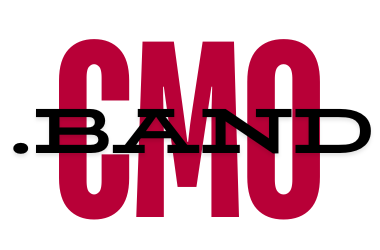In the rapidly evolving landscape of modern business, two terms frequently emerge at the forefront of strategic discussions: digital transformation and digitalization. While they may sound similar, understanding the nuanced differences between them is crucial for any organization looking to stay competitive in today’s digital age. As a digital marketing expert, I’ve witnessed firsthand the impact of both processes on businesses across various industries. Let’s navigate through these concepts to uncover their core differences and how they apply to today’s businesses.
Digital Transformation: A Holistic Shift
Digital transformation encompasses a comprehensive rethinking of how an organization uses technology, people, and processes to fundamentally change business performance. It’s a strategic, overarching change that goes beyond mere technological upgrades, aiming to improve efficiency, value, and innovation. Digital transformation requires a cultural shift within the organization, encouraging agility, flexibility, and a continuous learning mindset. It’s about leveraging digital technologies to create new — or modify existing — business processes, culture, and customer experiences to meet changing business and market requirements.
For instance, a retail company embracing digital transformation might not only upgrade its e-commerce platform but also rethink its entire supply chain, customer interaction models, and internal communication strategies to improve efficiency and customer satisfaction. This holistic approach often leads to the development of new business models and revenue streams, as digital technologies enable companies to offer innovative products and services.
Digitalization: The Process of Going Digital
Digitalization, on the other hand, refers to the process of converting analog information into digital formats. This includes digitizing physical documents, automating manual processes, or adopting digital tools to improve specific aspects of business operations. Unlike digital transformation, digitalization doesn’t necessarily entail a complete overhaul of business models, culture, or customer experiences. It’s more about enhancing and streamlining specific processes to reduce costs, improve efficiency, and eliminate manual errors.
A simple example of digitalization is a company moving its paper-based invoicing system to a digital platform. This change can lead to faster processing times, reduced errors, and improved record-keeping without fundamentally changing how the business operates.
Navigating the Differences
Understanding the distinction between digital transformation and digitalization is essential for businesses planning their digital strategy. Digitalization is often a component of digital transformation, but it doesn’t encompass the whole. You can think of digitalization as the tactical execution of specific tasks that lead to more efficient operations, while digital transformation is a strategic, company-wide initiative that redefines how the business operates and delivers value to customers.
For businesses, the choice between digital transformation and digitalization isn’t an either/or proposition. In many cases, successful digital transformation initiatives start with digitalization efforts. As companies digitize their processes and data, they often uncover opportunities for more profound, transformative changes that can lead to significant competitive advantages.
Implementing in Today’s Businesses
For businesses embarking on this journey, it’s crucial to start with a clear understanding of your goals and challenges. Digitalization projects can often be implemented relatively quickly, providing immediate improvements and setting the stage for broader transformation efforts. However, digital transformation requires a more thoughtful approach, involving leadership commitment, cultural change, and often, a longer timeline to realize its full benefits.
When planning a digital transformation, consider the following steps:
- Define Your Vision: Understand what digital transformation means for your business and what you hope to achieve.
- Engage Your Organization: Digital transformation is a team sport. It requires buy-in and participation across all levels of the organization.
- Assess Your Digital Maturity: Understand your starting point. Assess your current digital capabilities and identify gaps.
- Prioritize and Plan: Not everything can be transformed at once. Prioritize initiatives that will have the most significant impact and create a roadmap.
- Implement and Iterate: Digital transformation is an ongoing process. Implement changes, gather feedback, and be prepared to iterate.
Digitalization efforts, while often less complex, should also follow a strategic approach:
- Identify Opportunities: Look for manual processes or analog data that can be digitized to improve efficiency.
- Choose the Right Tools: Select digital tools that fit your business needs and can scale as you grow.
- Train Your Team: Ensure your team has the skills and knowledge to use new digital tools effectively.
- Monitor and Optimize: Continuously monitor the performance of your digitalized processes and look for ways to improve.
The Path Forward
In the digital era, both digital transformation and digitalization are essential for businesses aiming to thrive. While they serve different purposes, they are interconnected pieces of a broader digital strategy. By understanding their core differences and how they apply to your business, you can navigate the complexities of the digital landscape more effectively, ensuring your organization not only survives but thrives in the years to come.
Remember, the journey towards digital maturity is ongoing. It requires patience, resilience, and a willingness to adapt. But with a clear strategy and commitment, the rewards can be transformative, enabling your business to reach new heights of efficiency, innovation, and customer satisfaction.

A seasoned digital marketing strategist with over 8 years of experience across various areas of digital marketing, including SEO, SMM, PPC, content marketing, and email marketing. Specializes in transforming B2B, B2C, e-commerce, and SaaS businesses by creating effective go-to-market strategies and building thriving digital ecosystems. Known for a data-driven approach to optimizing campaigns and maximizing results.
“If your business is looking to scale or in need of a fresh perspective, feel free to contact”.



